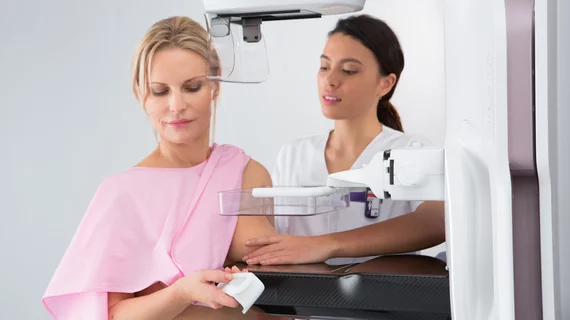Factors that fuel patients’ failure to follow-up after ‘probably benign’ breast findings
There are a few key factors that signal a patient may fail to follow up after a “probably benign” breast finding, according to new research published Oct. 14 in Academic Radiology [1].
One 2020 study estimated about 7% of radiology orders remained unscheduled at least a month after placement, with many considered medically necessary. Electronic communication tools can be useful in closing the loop, experts note. Adding a “human safety net team” to track radiologist recommendations for additional imaging can complement such software while remaining “revenue positive.”
Researchers with Harvard Medical School aimed to test this practice, retrospectively analyzing data pertaining to nearly 9,000 breast imaging examinations performed at a large health system. They found that failure to complete follow-up imaging was associated with a patient’s age, race, whether they underwent MRI or ultrasound, and insurance coverage, among other factors.
“Healthcare systems should systematically assess their human and IT-enabled processes for scheduling, ordering and tracking follow-up radiology examinations to ensure consistent, reliable and harmonized methods, reduce safety gaps and maximize completion,” Catherine S. Giess, MD, with Harvard’s Center for Evidence Based Imaging, and co-authors concluded. “Completion of recommended breast imaging follow-up is influenced by many demographic, socioeconomic and health system factors, and understanding these associations with incomplete imaging follow-up may inform safety net initiatives and potentially reduce delayed diagnosis.”
The study targeted women who received a BI-RADS (Breast Imaging Reporting and Data System) 3 designation in 2021. A search turned up a total of 8,834 exams, of which 77% (or 6,778) had follow-up imaging completed within 15 months. Giess et al. used the electronic health record and radiology information system to unearth data related to demographics, exam type, ordering and scheduling.
Factors associated with incomplete follow-up included whether patients underwent ultrasound (odds ratio: 0.22), MRI (0.1), were of Asian race (0.77), under age 40 (0.22), single (0.68), divorced (0.77), widowed (0.61), on public insurance (0.84), or using self-pay (0.59). Orders that were placed greater than eight months after the index exam (0.2), made by a non-primary care provider (0.51), or not scheduled on the same day also were less likely to result in follow-up imaging.
Giess and co-authors recommended deploying a radiology safety net team to target these issues while also bolstering the bottom line. In one 2021 study, experts created a multidisciplinary team comprised of care coordinators and schedulers and overseen by radiologists. The safety net team’s purpose was to monitor and manage a work queue of all orders placed, resulting in a “significant” decrease in unscheduled orders after implementation.
“Focusing on modifiable health system processes like timely order placement, building and using high reliability patient tracking processes, and increasing institutional awareness of socioeconomic vulnerabilities may inform efforts to address health inequities,” Giess and colleagues wrote.

